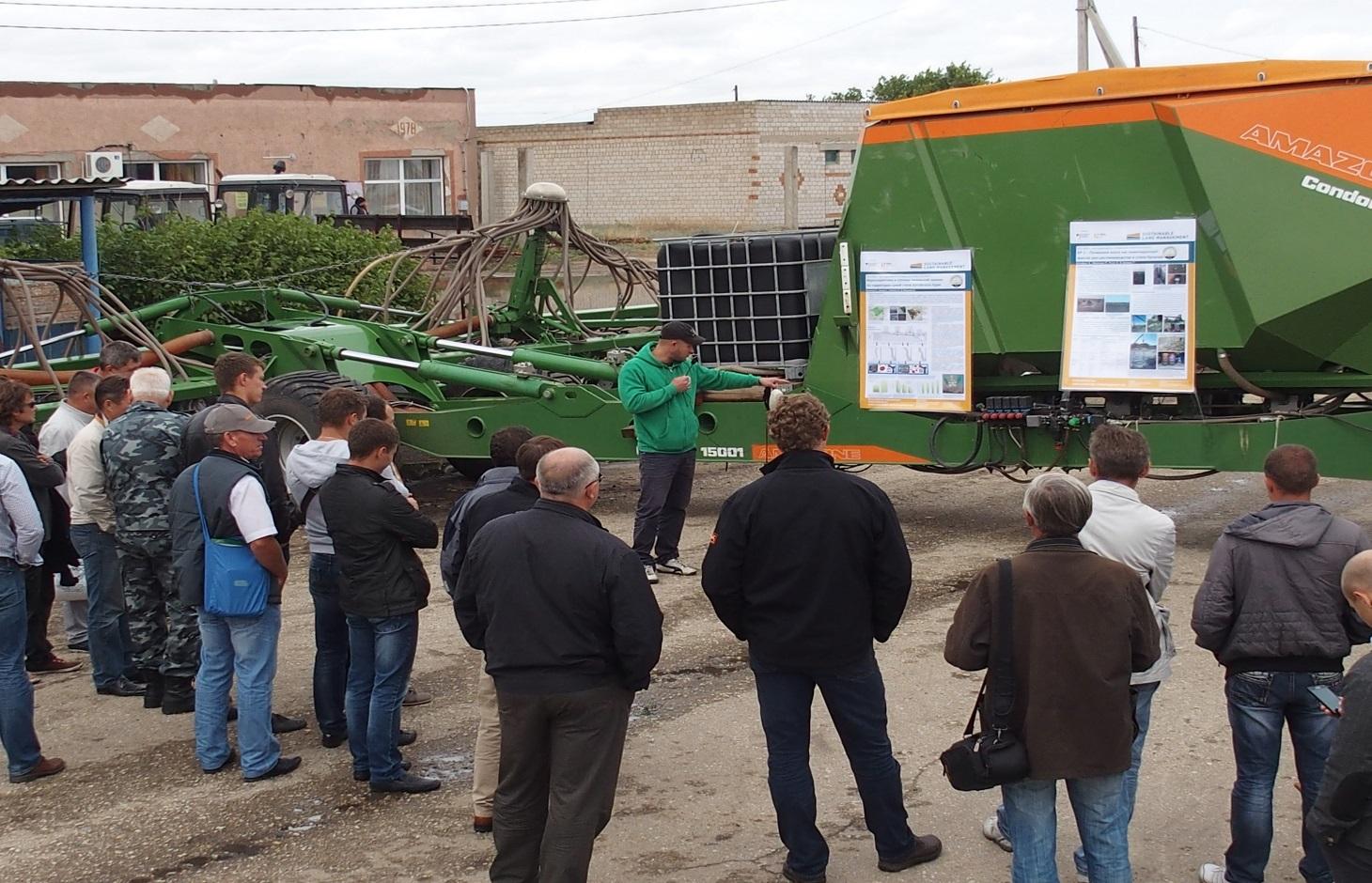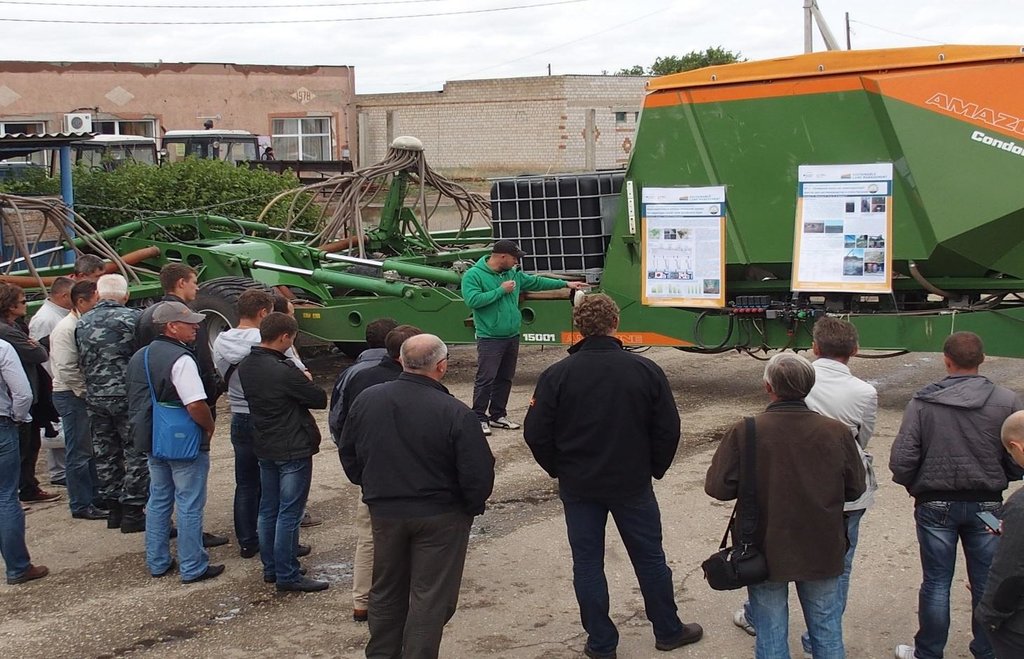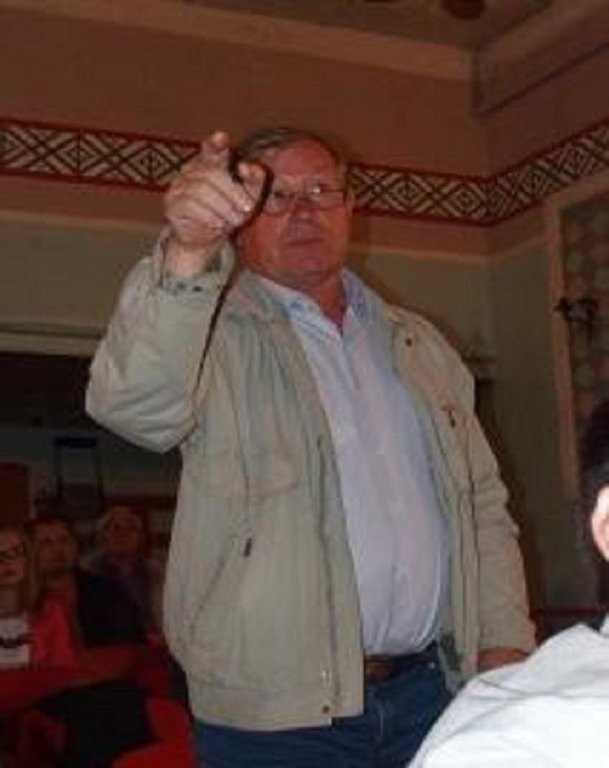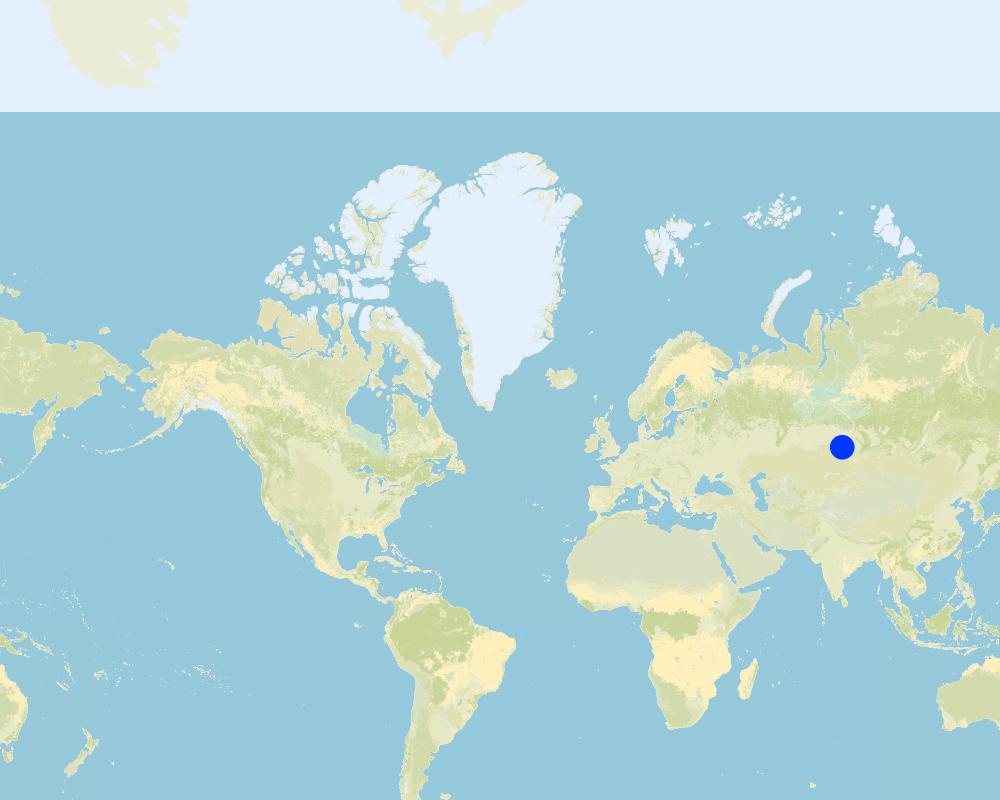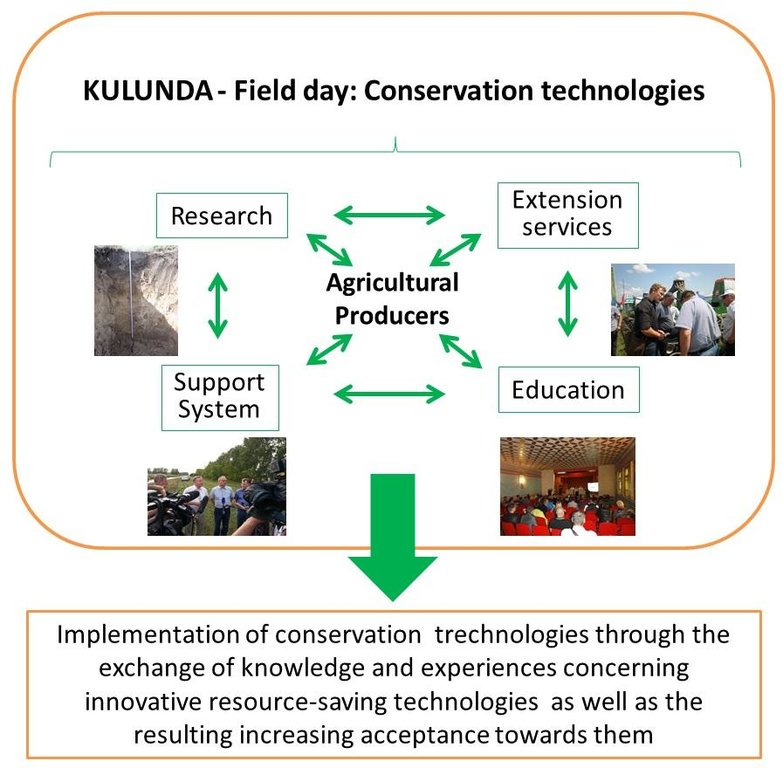Field days [俄罗斯联邦]
- 创建:
- 更新:
- 编制者: Peter Liebelt
- 编辑者: –
- 审查者: David Streiff, Deborah Niggli
Полевой семинар
approaches_2617 - 俄罗斯联邦
查看章节
全部展开 全部收起1. 一般信息
1.2 参与方法评估和文件编制的资源人员和机构的联系方式
SLM专业人员:
Jelinek Ladislav
Martin Luther University Halle-Wittenberg
SLM专业人员:
Kasarjyan Milada
Martin Luther University Halle-Wittenberg
SLM专业人员:
Wust Andreas
Martin Luther University Halle-Wittenberg
SLM专业人员:
Bavorova Miroslava
Martin Luther University Halle-Wittenberg
SLM专业人员:
Herzfeld Thomas
Martin Luther University Halle-Wittenberg
SLM专业人员:
Imamverdiyev Nizami
Martin Luther University Halle-Wittenberg
SLM专业人员:
Hiller Karsten
Martin Luther University Halle-Wittenberg
SLM专业人员:
Kley Dorothee
Martin Luther University Halle-Wittenberg
SLM专业人员:
Illiger Patrick
Martin Luther University Halle-Wittenberg
SLM专业人员:
Frühauf Manfred
Martin Luther University Halle-Wittenberg
有助于对方法进行记录/评估的项目名称(如相关)
Sustainable land management in the Russian steppes (KULUNDA / GLUES)有助于对方法进行记录/评估的项目名称(如相关)
Book project: Making sense of research for sustainable land management (GLUES)有助于对方法进行记录/评估的机构名称(如相关)
Martin-Luther-University Halle-Wittenberg (Martin-Luther-University Halle-Wittenberg) - 德国1.3 关于使用通过WOCAT记录的数据的条件
(现场)数据是什么时候汇编的?:
19/07/2016
编制者和关键资源人员接受有关使用通过WOCAT记录数据的条件。:
是
1.4 SLM技术问卷的参考
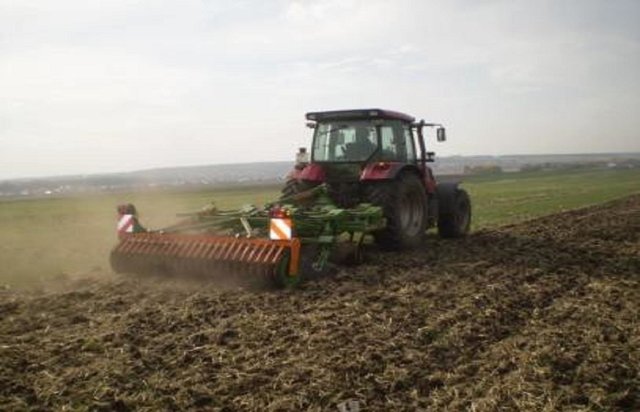
Minimum Tillage [俄罗斯联邦]
Minimum tillage is a one-pass operation combined with sowing, using a classic Russian seeder modified for seedbed preparation and soil mixing. It can include shallow stubble cultivation after harvesting.
- 编制者: Peter Liebelt
2. SLM方法的描述
2.1 该方法的简要说明
Field days are events for regional stakeholders, mainly farmers in the study area, to discuss their demands regarding scientific help, and to be informed about the activities and results of new methods and technologies for conservation agriculture.
2.2 该方法的详细说明
该方法的详细说明:
Aims / objectives: The approach aimed at raising awareness, encouraging exchange and communication for new sustainable land management (SLM) technologies including no-till and minimum till. The main goal - implementation of improved SLM technologies – was intended to be achieved through capacity building and strengthening of the acceptance of new technologies Field days, organized at a partner farm/ study site in Poluyamki (Mikhailovski Rayon), were a suitable framework for the achievement of this goal. Another objective of the field day is cooperation and networking between farmers, scientists, representatives of the regional politics and administration, and commercial companies. This stimulates the exchange of knowledge and the dissemination of new information about SLM - which is very important for the successful implementation and evolution of the technology.
Methods: For effective presentation of the minimum and no-till cropping systems to the public, and to give everyone present at the field day the opportunity to inform themselves about conservation measures, an information point was set up by the project. For spread of information about research activities, results and recommendations, posters were presented - and leaflets and brochures were handed out. In this way it was possible to promote knowledge transfer from the scientists to the farmers, and to receive feedback.
Stages of implementation: Furthermore, interdisciplinary and transdisciplinary knowledge exchange and discussion was initiated about the results and recommendations, which were based on the presentations given in the community centre. Due to the participation of many important local stakeholder groups, the field day was a suitable platform to contribute to network-building. Also, among the participants were private companies working in the agrarian sector. The cooperation partner of the research project, the Amazone company, also made presentations. In the study site the new tillage systems are already working. Furthermore the test farm unit in Poluyamki has also started to implement no-till and minimum tillage systems on fields outside the test farm, on farmer’s fields that do not belong to the project’s research sites and are not under the control of the project staff.
Role of stakeholders: Farmers are the stakeholders of primary importance, since it is hoped they will take up and implement the conservation technologies. Therefore most participants during the field day were farmers. Those invited are interested in new technologies and have the necessary financial power to invest in new technologies. The chances of successful implementation in their farms are very good. Most of these farms already have experience in conservation technologies. In the investigation area, about 20-30% of land is already cropped/ cultivated under some form of conservation soil tillage.
2.3 该方法的照片
2.5 采用该方法的国家/地区/地点
国家:
俄罗斯联邦
区域/州/省:
Altai Krai
有关地点的进一步说明:
Mikhaylovski district / rayon
注释:
Area of the test field: 0.13 km2
Total farmland, where the field day was organized: 250 km2
Whole investigation area, where the participants of the field day came from 80 000 km2
Map
×2.6 该方法的开始和终止日期
注明开始年份:
2013
终止年份(若不再采用该方法):
2016
2.7 方法的类型
- 基于项目/方案
2.8 该方法的主要目的/目标
The Approach focused mainly on SLM with other activities (Awareness raising for the importance of environmental as well as economic sustainability)
Improvement of technology adoption through: Awareness raising, knowledge exchange and transfer, capacity building
The SLM Approach addressed the following problems: - Low agricultural production of conventional/ traditional farming systems
- Limited economic efficiency of conventional/ traditional cropping systems
- Lack of soil water and decrease of soil fertility under conventional/ traditional farming systems
- lack of technical knowledge to implement modern adapted technologies for cropping and cope with more extreme events such as drought
2.9 推动或妨碍实施本办法所适用的技术的条件
社会/文化/宗教规范和价值观
- 阻碍
Historically-caused low levels of trust among land users and other local stakeholder groups like education institutions or consulting services, among others, limits the adoption of “good farming practices”.
Treatment through the SLM Approach: The field days and exchange of practice – oriented knowledge increased the confidence of farmers. This constraint can be addressed by specifically targeted policies, e.g. provision of grants or credit for the establishment of producer groups.
财务资源和服务的可用性/可得性
- 阻碍
High cost of new minimum and no-till machinery and difficult access to credits. Budget limitations are proportionately greater with smaller farms (highly variable yields reduce farm profitability, limited access to external funds)
Treatment through the SLM Approach: Subsidised interest rates for machinery. In 2015 machinery for no-till tillage was not susidized.
Demonstrate that environmentally friendly innovative farming technologies are profitable and worthwhile to invest in.
机构设置
- 阻碍
Unfavourable framework conditions and low capacity of the administration to monitor the state of land and to enforce the soil protection law which would oblige land users to adopt conservation measures.
Treatment through the SLM Approach: The approach did not address this factor.
法律框架(土地使用权、土地和水使用权)
- 阻碍
Unclear land use rights. High share of rented land. Missing incentives to stimulate land users to adopt conservation practices. Secure land use rights motivates to more conscious care for the land and stimulates farmers to adopt better practices.
Treatment through the SLM Approach: To make the best of private ownership, land users need to get a better concept of farming as a business. Strengthen the role of the ‘state redistribution of funding’ system (between different branches of the economy).
The existing land ownership, land use rights / water rights moderately hindered the approach implementation There are still some legislative and administrative weaknesses that limit the full execution of the ownership rights (non-defined borders, lacking cadastral registration of some plots, missing owners, etc.). Furthermore, around half of the land utilized in Altai Krai is owned by the state (of that around 2 milion hectares are administered by the Redistribution Fund). Another aspect is the capacity of the state monitoring agency (State Veterinary and Phytosanitary Controls) to control the compliance of the rules provided the land use conditions are stricter.
了解SLM,获得技术支持
- 阻碍
In Russia conventional / traditional cultivation still prevails. although market for no-till technologies is fully developed and functional. Various machinery companies either have branches or production units in Russia.
Treatment through the SLM Approach: More events where experience and results of min- and no-till can be shared and discussed.
3. 相关利益相关者的参与和角色
3.1 该方法涉及的利益相关者及其职责
- 当地土地使用者/当地社区
Local farmers of the Altai Krai
- 社区组织
Local farm cooperatives of the Altai Krai
- SLM专家/农业顾问
Regional advisors and national SLM specialists and international specialist (KULUNDA scientists)
- 地方政府
Politicians of the territory level (Altai Krai) and district level Mikhayloski rayon.
- Staff member of the project
German and Russian scientists of the project
3.2 当地土地使用者/当地社区参与该方法的不同阶段
| 当地土地使用者/当地社区的参与 | 指定参与人员并描述活动 | |
|---|---|---|
| 启动/动机 | 互动 | Experimental plots, demonstration plots and field days were held on land users farms |
| 计划 | 互动 | |
| 实施 | 互动 | |
| 监测/评估 | 互动 | |
| Research | 被动 |
3.3 流程图(如可用)
具体说明:
The Field Day brings different stakeholder groups together and promotes new technologies and thus the implementation of conservation land use practices. This is through knowledge and exchange on resource-saving technologies.
作者:
Peter Liebelt
3.4 有关SLM技术选择的决策
具体说明谁有权决定选择要实施的技术:
- 主要是SLM专家,咨询土地使用者之后
解释:
The SLM specialists of the the KULUNDA project mainly make the decisions on the choice of the SLM technology in cooperation with the farmers.
Decisions on the method of implementing the SLM Technology were made by Project staff. At the beginning of the project a large interview campaign with relevant local stakeholders was conducted by the scientists of the KULUNDA-project. Based on the survey results, a decision on the implementation measures were made by the scientific staff on the German and Russian site with consultation with local stakeholder groups .
4. 技术支持、能力建设和知识管理
4.1 能力建设/培训
是否为土地使用者/其他利益相关者提供培训?:
是
明确受训人员:
- 土地使用者
- 现场工作人员/顾问
培训形式:
- 农民对农民
- 示范区域
- 公开会议
涵盖的主题:
Competitiveness of agricultural enterprises, ecologically and economically effective farm management through the use of resource-conserving crop production, costs for introducing modern tillage systems, personnel management, monitoring systems
4.2 咨询服务
土地使用者有权使用咨询服务吗?:
是
指明是否提供了咨询服务:
- 在土地使用者的土地上
说明/注释:
Name of method used for advisory service: Field days for demonstration and exchange; Key elements: The field seminar was a suitable platform for knowledge exchange on agricultural production in the Kulunda steppe, Capacity building: On-field demonstration as well as poster and presentations of project results and recommendations. Discussions in the field as well as in the lecture room allowed to address individual stakeholder questions and to suggest solutions. ; Training events in the vocational centre as a suitable way for knowledge transfer to farmers and specialists (training for trainers) in agricultural sector and capacity building.
Advisory service is quite adequate to ensure the continuation of land conservation activities; There is already mainly a governmental advisory structure. The consultants are able to make recommendations for soil conserving technologies. However, international expertise and the demand of consultation by the farmers is too low.
4.4 监测和评估
监测和评估是该方法的一部分吗?:
是
注释:
Bio-physical aspects were regular monitored by project staff, land users through observations; indicators: crop and weed development, field emergence
Bio-physical aspects were regular monitored by project staff through measurements; indicators: physical and chemical soil parameters as well as soil water
Technical aspects were regular monitored by project staff, land users through observations; indicators: observation of the functionality of the soil conserving technologies, placement accuracy
Technical aspects were regular monitored by project staff through measurements; indicators: fuel consumption, yield,
Socio-cultural aspects were ad hoc monitored by project staff through observations; indicators: attitude
Economic / production aspects were regular monitored by project staff through measurements; indicators: input costs (labour seed, fertilizer, pesticide yield, profit margin
No. of land users involved aspects were ad hoc monitored by project staff through observations
Management of Approach aspects were ad hoc monitored by None through observations
There were no changes in the Approach as a result of monitoring and evaluation
4.5 研究
研究是该方法的一部分吗?
是
明确话题:
- 社会学
- 经济/市场营销
- 生态学
- 技术
5. 融资和外部物质支持
5.1 该方法中SLM组成部分的年度预算
如果不知道准确的年度预算,请给出一个范围:
- 2,000-10,000
注释(例如主要的资助来源/主要捐助者):
Approach costs were met by the following donors: international (German Ministry of Education and Research, BMBF): 50.0%; private sector (AMAZONE Company for land use technology): 50.0%
5.2 为土地使用者提供财政/物质支援
土地使用者是否获得实施该技术的财政/物质支持?:
是
如果是,请具体说明支持的类型、条件和提供者:
by the agricultural company 'AMAZONE'
5.3 对特定投入的补贴(包括劳动力)
- 设备
| 具体说明哪些投入得到了补贴 | 程度如何 | 对补贴做出具体说明 |
|---|---|---|
| 机械 | 部分融资 | |
| 工具 | 部分融资 | |
- 农业
| 具体说明哪些投入得到了补贴 | 程度如何 | 对补贴做出具体说明 |
|---|---|---|
| 种子 | 部分融资 | |
| 化肥 | 部分融资 | |
如果土地使用者的劳动力是一项重要的投入,那么是不是:
- 自愿
5.4 信用
是否根据SLM活动的方法给予信用值?:
否
6. 影响分析和结论性陈述
6.1 方法的影响
该方法是否帮助土地使用者实施和维护SLM技术?:
- 否
- 是,很少
- 是,中等
- 是,支持力度很大
The field day allowed the transfer of project-based results on the subject of conservation agriculture to the local farmers and other regional actors and promotes the implementation of new soil conserving methods and strategies in the research area by the farmers.
该方法是否有助于社会和经济弱势群体?:
- 否
- 是,很少
- 是,中等
- 是,支持力度很大
The implementation of the technology is not primarily aimed at these issues.
该方法是否改善了阻碍SLM技术实施的土地使用权/用户权问题?:
- 否
- 是,很少
- 是,中等
- 是,支持力度很大
The problem is unlikely to be overcome in the near future.
Did other land users / projects adopt the Approach?
- 否
- 是,很少
- 是,中等
- 是,支持力度很大
The field days motivated the farmers and land use specialists to implement the conservation technologies. There is no information about the number of farmers who implement as a result of the field days.
Did the Approach lead to improved livelihoods / human well-being?
- 否
- 是,很少
- 是,中等
- 是,支持力度很大
By implementing the new conservation technologies the sustainability of farming systems in both the ecological and the economic sense increases.
Did the Approach help to alleviate poverty?
- 否
- 是,很少
- 是,中等
- 是,支持力度很大
The implementation of the minimum till and no till technologies protect the soil as an important living and economic basis.
6.2 土地使用者实施SLM的主要动机
- 增加生产
To minimize fluctuations in yield and to secure yield through a higher sustainability
- 增加利润(能力),提高成本效益比
Due to the higher profit margin
- 减少工作量
The reduction of workload is important especialy in terms of the large farm sizes.
- 支付/补贴
- 加入运动/项目/团体/网络
Affiliation with the KULUNDA project
6.3 方法活动的可持续性
土地使用者能否维持通过该方法实施的措施(无外部支持的情况下)?:
- 是
6.4 该方法的长处/优点
| 土地使用者眼中的长处/优势/机会 |
|---|
| Opportunity for farmers to get information about new agricultural machinery and other products for implementing new conservation farming system (How to sustain/ enhance this strength: More intensive and profound consultation by agricultural companies regarding new conservation technologies.) |
| Exchange of experience in sustainable land use technologies between the farmers (How to sustain/ enhance this strength: More participating farmers and a constant exchange between not only on the field days) |
| Land user, specialists and advisers all get to know about new technical findings and basic research (How to sustain/ enhance this strength: Regular meetings between the stakeholders. Inclusion of knowledgeable and successful farmers will increase the acceptance of the results presented.) |
| 编制者或其他关键资源人员认为的长处/优势/机会 |
|---|
| Network building - strengthening and extension of the stakeholder platform. This platform includes different stakeholder spheres: extension service, land users, those in education, scientists, other support systems (How to sustain/ enhance this strength: By inviting various stakeholder groups and by creating opportunities for communication between participants.) |
| Participation of land users allows farmer-to-farmer learning (How to sustain/ enhance this strength: Inclusion of different stakeholders for broad knowledge transfer. Large number of visitors helps to disseminate knowledge.) |
6.5 该方法的弱点/缺点以及克服它们的方法
| 土地使用者认为的弱点/缺点/风险 | 如何克服它们? |
|---|---|
| Great organizational effort | More external support of field days for farmers. |
| Because of the high number of participants and the time limit field days are not well suited for coaching of individual farmers | Intensification of extension services. Initiation of additional events for advising. |
| 编制者或其他关键资源人员认为的弱点/缺点/风险 | 如何克服它们? |
|---|---|
| Reconciliation of basic research and applied research | Intensified cooperation between researchers and practitioners like farmers or agricultural companies |
| Limited duration of the project | By enhancing continuity of measures that are independent of the project. Strategy to initiate and promote the engagement of local partners such as the agricultural university or farmer associations / groups. |
7. 参考和链接
7.1 方法/信息来源
- 实地考察、实地调查
- 与土地使用者的访谈
链接和模块
全部展开 全部收起链接

Minimum Tillage [俄罗斯联邦]
Minimum tillage is a one-pass operation combined with sowing, using a classic Russian seeder modified for seedbed preparation and soil mixing. It can include shallow stubble cultivation after harvesting.
- 编制者: Peter Liebelt
模块
无模块


